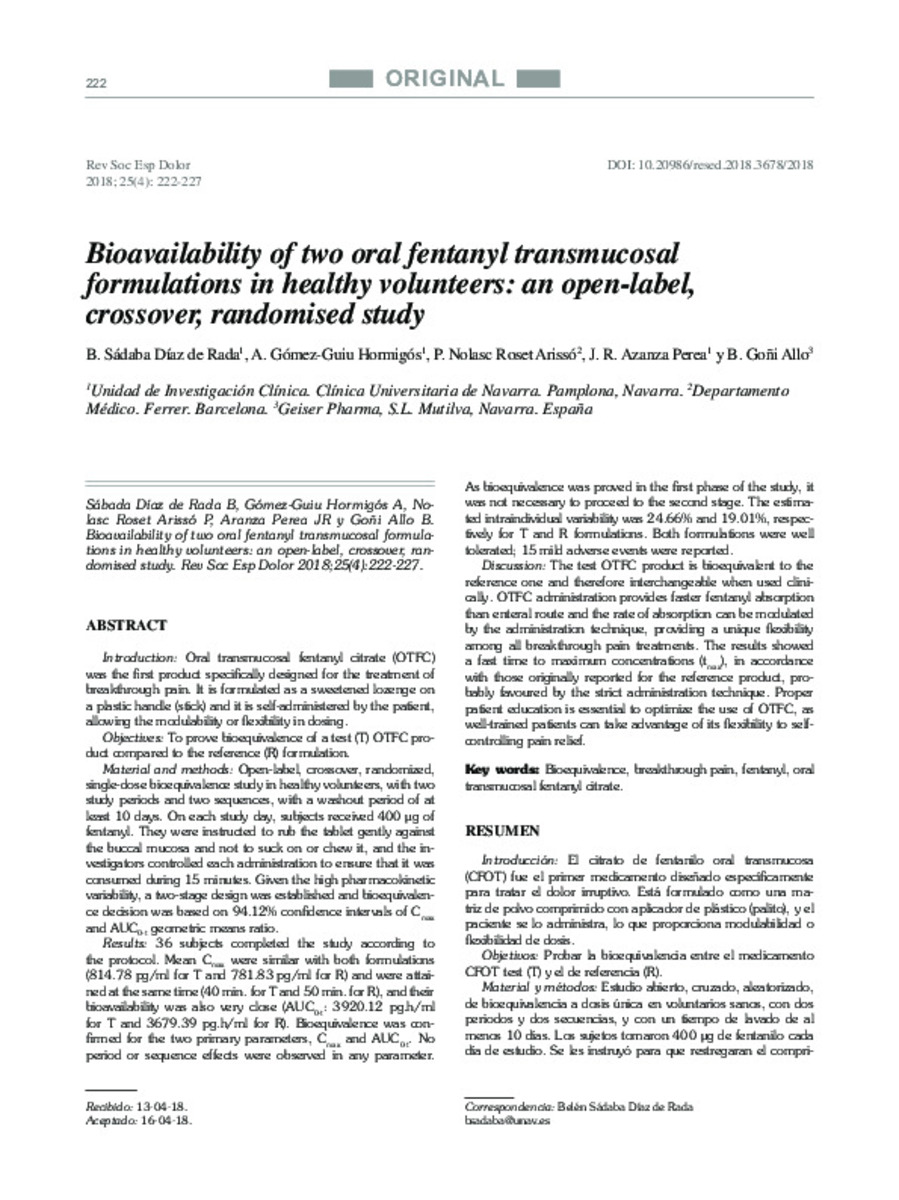Bioavailability of two oral fentanyl transmucosal formulations in healthy volunteers: an open-label, crossover, randomised study.
Palabras clave :
Bioequivalence
Breakthrough pain
Oral transmucosal fentanyl citrate
Fecha de publicación :
2018
Cita:
Sadaba, B. (Belén); Gomez-Guiu, A. (Almudena); Roset-Arissó, P.N. (P. Nolasc); et al. "Bioavailability of two oral fentanyl transmucosal formulations in healthy volunteers: an open-label, crossover, randomised study.". Revista de la sociedad española del dolor. 25 (4), 2018, 222 - 227
Aparece en las colecciones:
Estadísticas e impacto
0 citas en

Los ítems de Dadun están protegidos por copyright, con todos los derechos reservados, a menos que se indique lo contrario.







